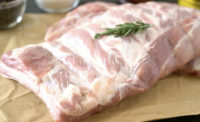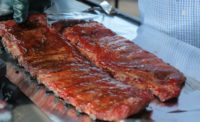Meat makes memories

I’ve been writing about the food industry for more than a quarter-century, and in the line of duty as a writer covering the fruit and vegetable industry I was fortunate to be able to see a little bit of the world.
During those trips I enjoyed many unforgettable eating experiences, and much of the time it was the meat that made the memory (maybe that’s what they mean by “The Power of Meat”).
One of my most memorable meat-eating experiences comes courtesy of the Sonora Spring Summit, where Mexican grape growers would celebrate the start of their seasonal shipments to the U.S. by having a massive cookout, and by massive I mean they roasted an entire cow over a fire. The grilled tripe and udder were standouts, with a crispy, charred fatty outside wrapped around a juicy inside. The beef-eating culture runs deep in West Mexico, with machaca (shredded, dried beef) used in tacos and burritos or enjoyed pan-fried as an appetizer. Steakhouses around the city of Hermosillo boast of “el ribeye” served with a baked potato. Street vendors selling Hermosillo’s famed Sonoran hot dog (bacon-wrapped and grilled, topped with pinto beans, onions, tomatoes, and a variety condiments such as mayonnaise, mustard and salsa) were hard to miss — or pass up.
Deeper south in Mexico, the beef tongue mole in Guadalajara might be the most tender meat I’ve ever eaten.
In Canada, our northern neighbor also proved they know what’s up when it comes to beef, with the bone-in ribeye at a Calgary, Alberta, steakhouse bringing a satisfied smile to this Kansas City boy’s face.
South Africa impressed me with its biltong, dried meat made from beef or game meats, such as springbok. I also appreciated South Africans’ love of meat cooked on the grill, or brai as it’s called in Afrikaans.
I spent a week in Berlin once for a trade show, where I was introduced to currywurst and pork knuckles — both tasty. I also learned that wiener schnitzel has nothing at all to do with sausages but rather is chicken-fried steak’s German cousin. Mexico boasts a similar dish called milanesa.
Peru’s national dish of roasted chicken did not disappoint, nor did Lima’s signature ceviche. Peru’s other national dish is cuy, or what we North Americans call “guinea pig.” It was OK.
Looking for a reprint of this article?
From high-res PDFs to custom plaques, order your copy today!
.png?height=96&t=1647275041&width=96)







